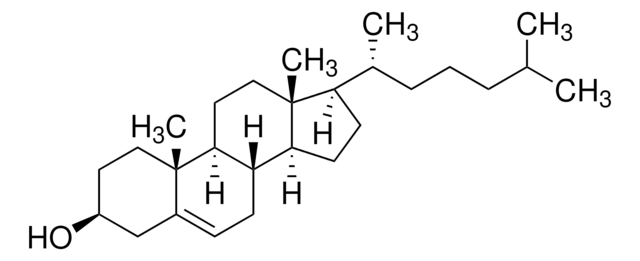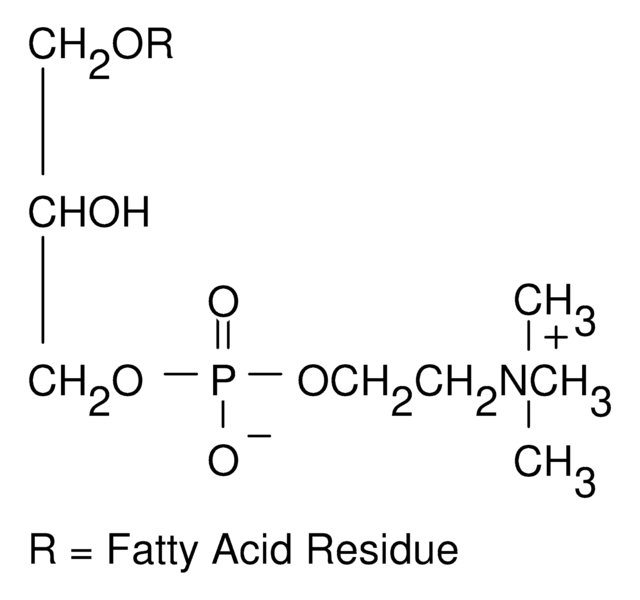L2131
1-Stearoyl-sn-glycero-3-phosphocholine
≥99%, powder
Synonym(s):
L-α-Lysophosphatidylcholine, stearoyl, Lysolecithin, stearoyl
About This Item
Recommended Products
biological source
synthetic (organic)
Quality Level
Assay
≥99%
form
powder
color
white
functional group
phospholipid
lipid type
phosphoglycerides
shipped in
ambient
storage temp.
−20°C
SMILES string
O[C@](COP([O-])(OCC[N+](C)(C)C)=O)([H])COC(CCCCCCCCCCCCCCCCC)=O
InChI
1S/C26H55NO7P/c1-5-6-7-8-9-10-11-12-13-14-15-16-17-18-19-20-26(29)32-23-25(28)24-34-35(30,31)33-22-21-27(2,3)4/h25,28H,5-24H2,1-4H3,(H,30,31)
InChI key
ARQYPVZFUYHQFR-UHFFFAOYSA-N
Application
<li><strong>Plant-derived phenolics inhibit the accrual of structurally characterised protein and lipid oxidative modifications: </strong> Demonstrates the role of 1-Stearoyl-sn-glycero-3-phosphocholine in preventing oxidative modifications in cellular membranes, pertinent to drug delivery systems and cell signaling studies (Soler-Cantero et al., 2012).</li>
</ul>
Biochem/physiol Actions
Storage Class Code
11 - Combustible Solids
WGK
WGK 3
Flash Point(F)
Not applicable
Flash Point(C)
Not applicable
Personal Protective Equipment
Choose from one of the most recent versions:
Certificates of Analysis (COA)
Don't see the Right Version?
If you require a particular version, you can look up a specific certificate by the Lot or Batch number.
Already Own This Product?
Find documentation for the products that you have recently purchased in the Document Library.
Our team of scientists has experience in all areas of research including Life Science, Material Science, Chemical Synthesis, Chromatography, Analytical and many others.
Contact Technical Service








